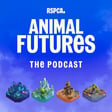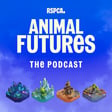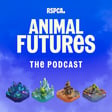
Episode 3 - Wildlife rehab, ecology and trees with Peter Smith
Welcome to Walk on the Wild Side, an RSPCA podcast. We’ll meet people from this 200-year-old animal welfare charity, and learn about what they do. We’ll discover more about the amazing wildlife all around us, and how we can help it thrive, and be inspired to get outdoors and into nature.
In this episode, Holly gets a guided tour of RSPCA Mallydams Wood from Centre Manager Peter Smith, discovering a range of specialist facilities for the assessment, care and rehabilitation of wildlife. Outside, there are woodland environments for foxes and kestrels, pools where young seals can gain strength before returning to the wild, and aviaries for birds of all ages. Inside the centre, there are treatment rooms, specialist areas for cleaning oiled birds – a highly technical process – and isolation cubicles for larger animals. In the kitchen, specialist food is prepared for hundreds of different species of animals, mixed precisely for each animal. Holly and Peter also watch an RSPCA archive film about foxes, made in 1970.
Host: Holly Cushen
Writers: Holly Cushen and Morwenna Kearns
Producer: Morwenna Kearns
Audio producer: Chris Attaway
Wildlife advisor: Rebecca Machin
Executive producer: Sarah Millerick
Recorded on location at RSPCA Mallydams Wood near Hastings
Wildlife advice: rspca.org.uk/adviceandwelfare/wildlife
RSPCA Mallydams Wood on Instagram: instagram.com/mallydams_wildlife_rehab
More information on how to get involved: rspca.org.uk/getinvolved/donate/audio



